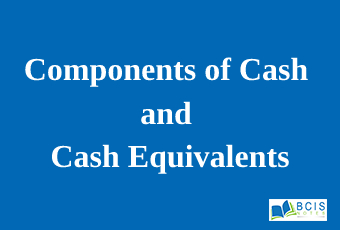
Components of Cash and Cash Equivalents
Cash and cash equivalents refer to the line item on the balance sheet that reports the value of a company’s assets that are cash or can be converted into cash immediately. Cash equivalents include bank accounts and marketable securities, which are debt securities with maturities of less than 90 days. Cash and cash equivalents are the most liquid current assets found on a business’s balance sheet. Cash equivalents are short-term commitments “with temporarily idle cash and easily convertible into a known cash amount”.
Examples of cash equivalents include commercial paper, Treasury bills, and short-term government bonds with a maturity date of three months or less. Marketable securities and money market holdings are considered cash equivalents because they are liquid and not subject to material fluctuations in value.
Types of Cash and Cash Equivalents
Cash and cash equivalents help companies with their working capital needs since these liquid assets are used to pay off current liabilities, which are short-term debts and bills.
Cash
Cash is money in the form of currency, which includes all bills, coins, and currency notes. A demand deposit is a type of account from which funds may be withdrawn at any time without having to notify the institution. Examples of demand deposit accounts include checking accounts and savings accounts. All demand account balances as of the date of the financial statements are included in cash totals.
Foreign Currency
Companies holding more than one currency can experience currency exchange risk. Currency from foreign countries must be translated to the reporting currency for financial reporting purposes. The conversion should provide results comparable to those that would have occurred if the business had completed operations using only one currency. Translation losses from the devaluation of foreign currency are not reported with cash and cash equivalents. These losses are reported in the financial reporting account called “accumulated other comprehensive income.”2
Cash Equivalent
Cash equivalents are investments that can readily be converted into cash. The investment must be short-term, usually with a maximum investment duration of three months or less. If an investment matures in more than three months, it should be classified in the account named “other investments.” Cash equivalents should be highly liquid and easily sold on the market. The buyers of these investments should be easily accessible.
Cash and Cash Equivalents Do Not Include
There are some exceptions to short-term assets and current assets being classified as cash and cash equivalents.
Credit Collateral
Exceptions can exist for short-term debt instruments such as Treasury bills if they’re being used as collateral for an outstanding loan or line of credit. Restricted T-bills must be reported separately. In other words, there can be no restrictions on converting any of the securities listed as cash and cash equivalents.
Inventory
Inventory that a company has in stock is not considered a cash equivalent because it might not be readily converted to cash. Also, the value of inventory is not guaranteed, meaning there’s no certainty in the amount that’ll be received for liquidating the inventory.
You may also like Use of computers in the preparation of cash flow statements

Leave a Reply